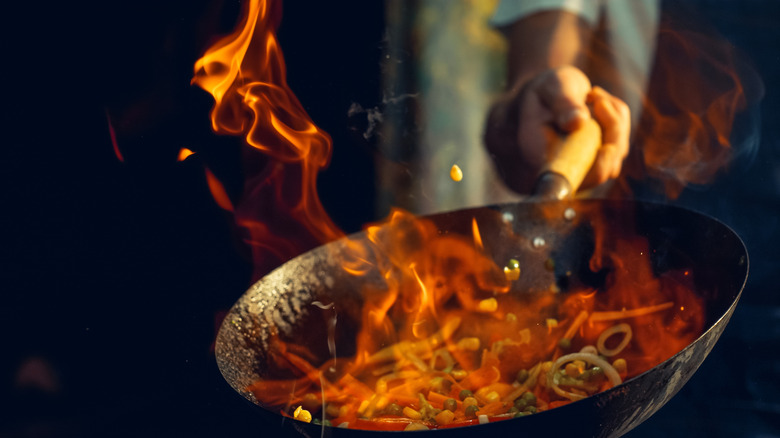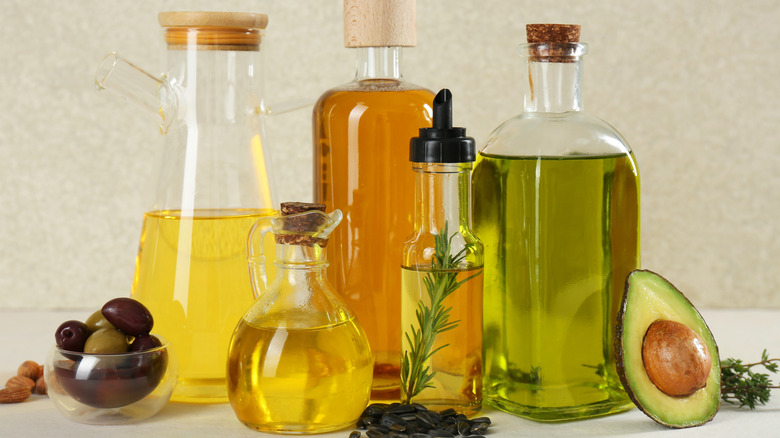What Does Smoke Point Mean (And How Important Is It In Cooking)?
Have you ever come across the term "smoke point" when reading a recipe? It's not how you get smoky flavor into your food. Smoke point is the temperature at which a fat, such as oil or tallow, begins to burn and break down, compromising its flavor.
If you've ever seen a recipe that calls for you to heat oil until it starts shimmering, it means you're approaching the boundaries of its smoke point. With just a bit more heat, the oil's molecules start to break apart and burn, creating a foul, bitter taste. This process is sometimes inevitable, especially if you cook at extremely high temperatures, but prolonged exposure to burnt oil ruins your food. To successfully recreate a recipe, you must keep the smoke point of your cooking fat in mind.
The smoke point of cooking fat is one of the biggest determiners of which oil to use in a recipe. For example, a stir fry requires direct contact with high-temperature surfaces, so it uses neutral, refined oils with high smoke points. If you're just sautéing vegetables in a pan, you can use something flavorful with a low smoke point like virgin olive oil or sesame oil. Smoke point is also a factor when it comes to cooking eggs in butter or olive oil. Choosing a cooking fat is all about achieving a balance between flavor and heat tolerance, so it's important to know just how to handle different fats.
Refined vs. unrefined: What's the difference in smoke points?
Thinking that two fats from the same plant have the same smoke point is one of the common mistakes people make when cooking with oil. Fortunately, there are plenty of labels and terminology that can give you an idea on how hot a fat can get before it starts to burn.
If you see "unrefined" or "virgin" on a bottle of oil, that means it contains more impurities. While this often gives it more flavor, it also means the oil has a much lower smoke point. Extra virgin or unrefined olive oil has a smoke point between 325 and 375 degrees Fahrenheit while refined or light versions start to burn at 465 degrees Fahrenheit. The difference in smoke points is one of the biggest reasons why virgin olive oil isn't used to deep fry chicken or make a stir fry.
Refined versions of oils go through heating and bleaching processes to remove any particulates, leaving a clean, smooth product. These are often more shelf stable, though they may lack some of the flavor and vitamins of unrefined versions. Thanks to their higher smoke points, these oils are far more versatile than their unrefined versions and are favored by new cooks who may not be great at temperature control just yet.


